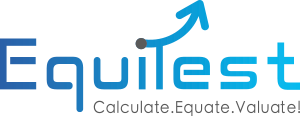What are the known Business Valuation Methods?
The business valuation determines the current worth of a business using objective measures.
A business valuation is used for various reasons, including establishing partner ownership, sale value, tax, and even divorce proceedings.
In this blog post, we will answer the question - what are the known Business Valuation Methods?
There are two major approaches to valuing a firm – the Qualitative and the Quantitative Approaches.
The qualitative approach tried to conclude the business's worth by exploring the company’s products, services, management, competitors, etc.
The qualitative approach concentrates on the quality of the company. In contrast, the quantitative approach concentrates on numbers – the income statements, balance sheets, and cash flows, and analyzes the relationship between price and intrinsic value.
The approaches include methods, such as the Berkus method and the scorecard valuation method.
The Berkus Method is named after Dave Berkus, who value the investments he makes, based on five major strength the firm has – a sound idea, a prototype, a quality management team, strategic relationships, and product rollout or sales.
The Scorecard Valuation Method, developed by Bill Payne, is one of the most commonly used methodologies by business angels. The method compares the target start-up (raising investment) to typical angel-funded ventures. It adjusts the median valuation based on specific comparison factors such as team strength, size, or product.
Given all Business Valuation Methods, one can divide all methods into two major approaches, when it comes to valuing a firm – the Qualitative and the Quantitative Approaches.
The Quantitative Approaches includes four main business valuation methods – the discounted cash flow valuation (DCF), the asset-based valuation, relative valuation, and the contingent claim valuation.
The first method, the discounted cash flow valuation (DCF), relates the value of an asset to the present value of expected future cash flows on that asset, discounted back at a rate that reflects these cash flows' riskiness. This approach gets the most play in academia and comes with the best theoretical credentials.
The second method, the asset-based valuation, includes liquidation and accounting valuation. This approach is built around valuing a firm's existing assets, with accounting estimates of value or book value often. It is based on the argument that a business's value is the sum of the values of the individual assets owned by the business. Many times the asset-based valuation is used as a starting point.
The third, relative valuation, estimates an asset's value by looking at the pricing of 'comparable' assets relative to a common variable like earnings, cashflows, book value, or sales. In relative valuation, we value an asset-based upon how similar assets are priced in the market.
Like a prospective house buyer who decides how much to pay for a house by looking at the prices paid for similar houses in the same neighborhood, a potential investor in a stock tries to estimate its value by looking at the market pricing of “similar” stocks.
The fourth approach, contingent claim valuation, uses option pricing models to measure assets' value that shares option characteristics. A contingent claim is a derivative whose future payoff depends on the value of another “underlying” asset, or more generally, that is dependent on the realization of some uncertain future event. These are so named since there is only a payoff under certain contingencies.
To sum, in this blog post, we have answered the question - what are the known Business Valuation Methods?


